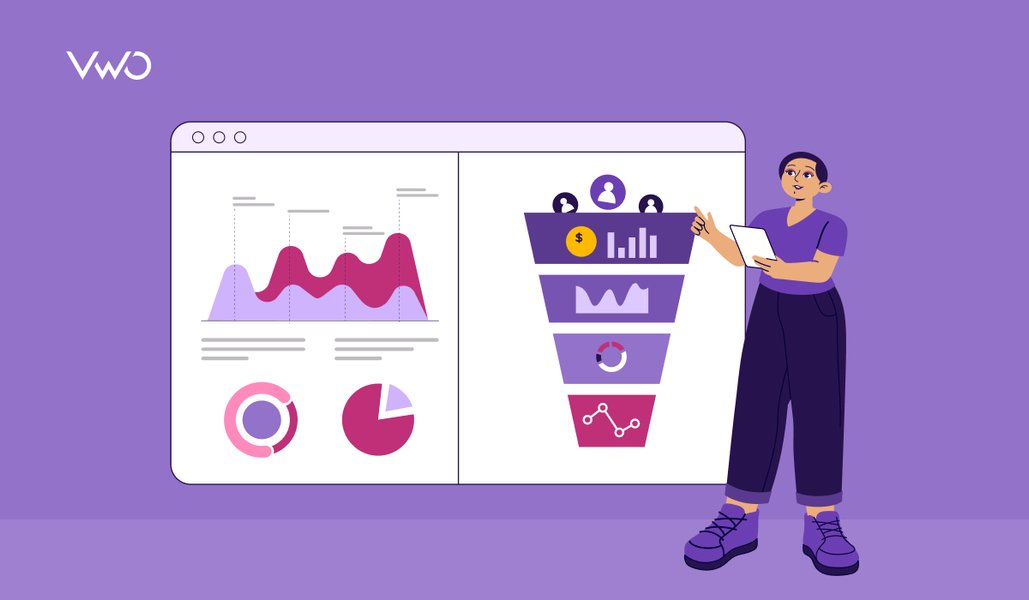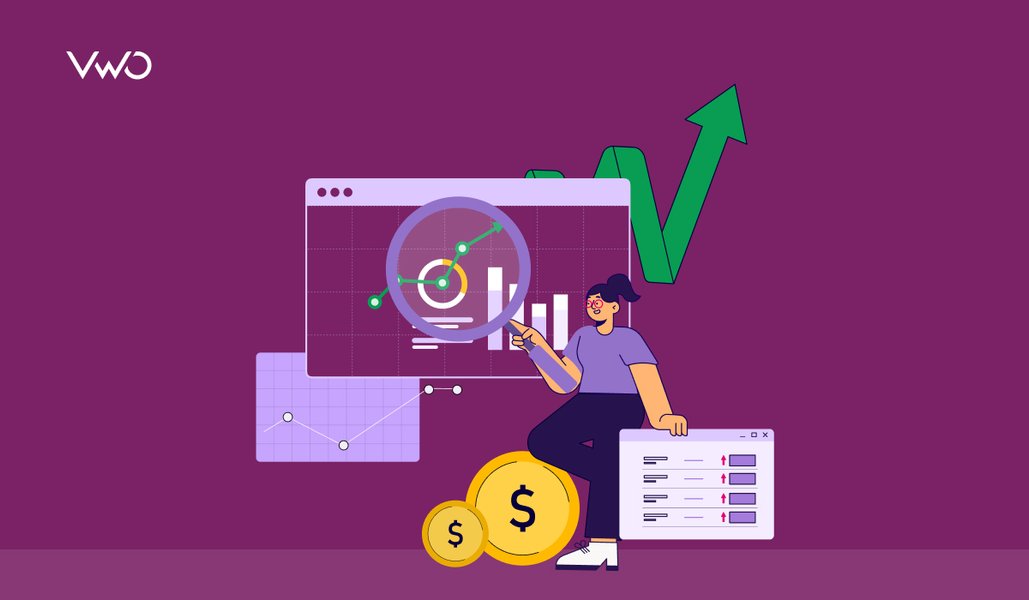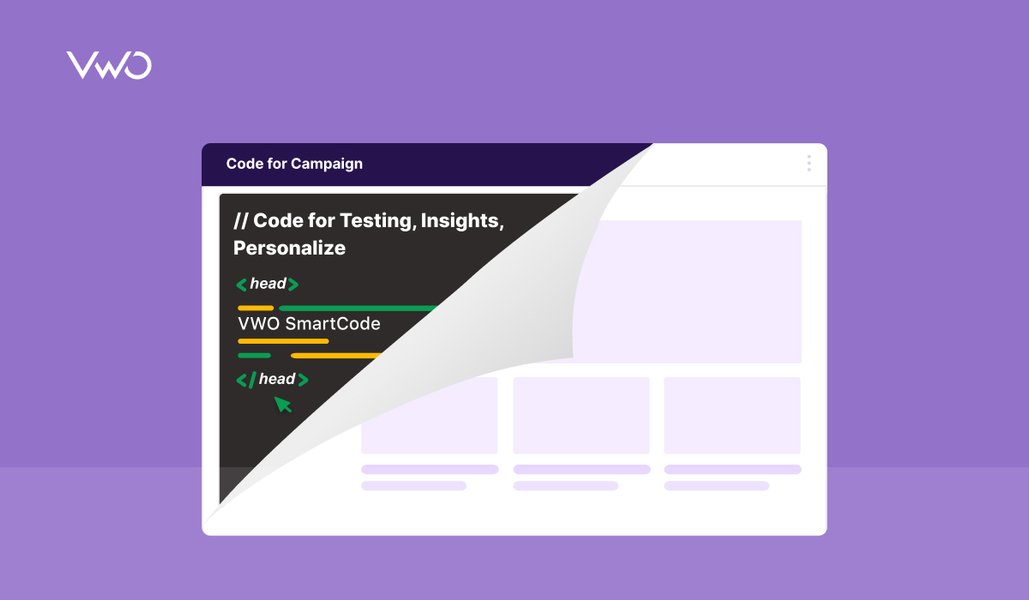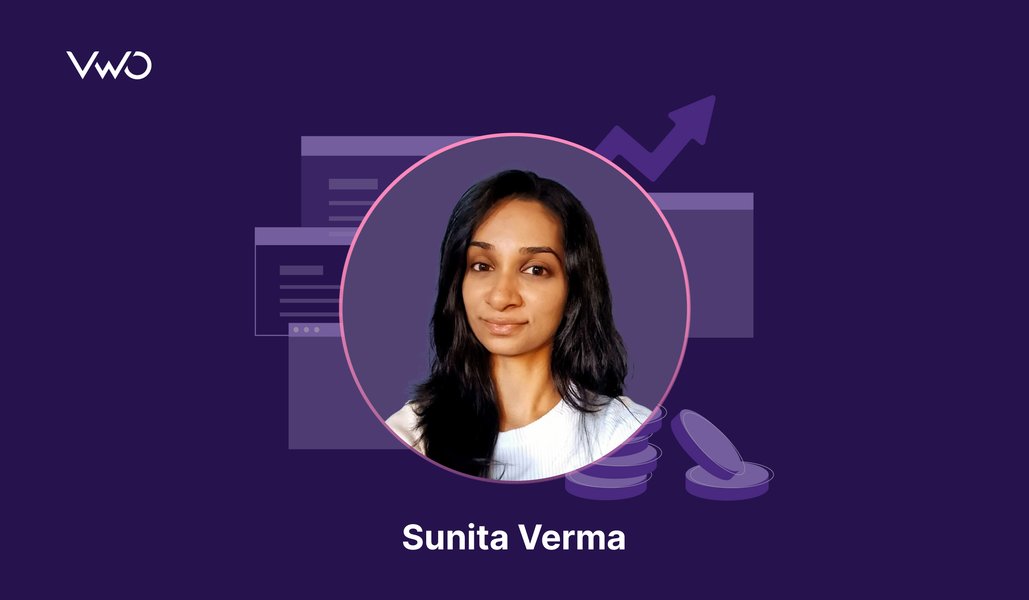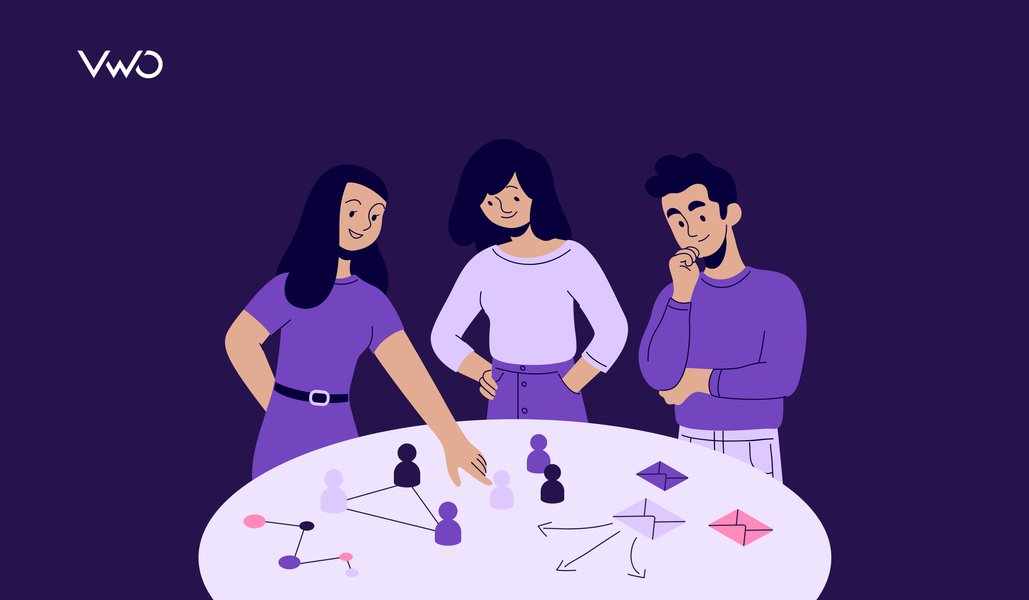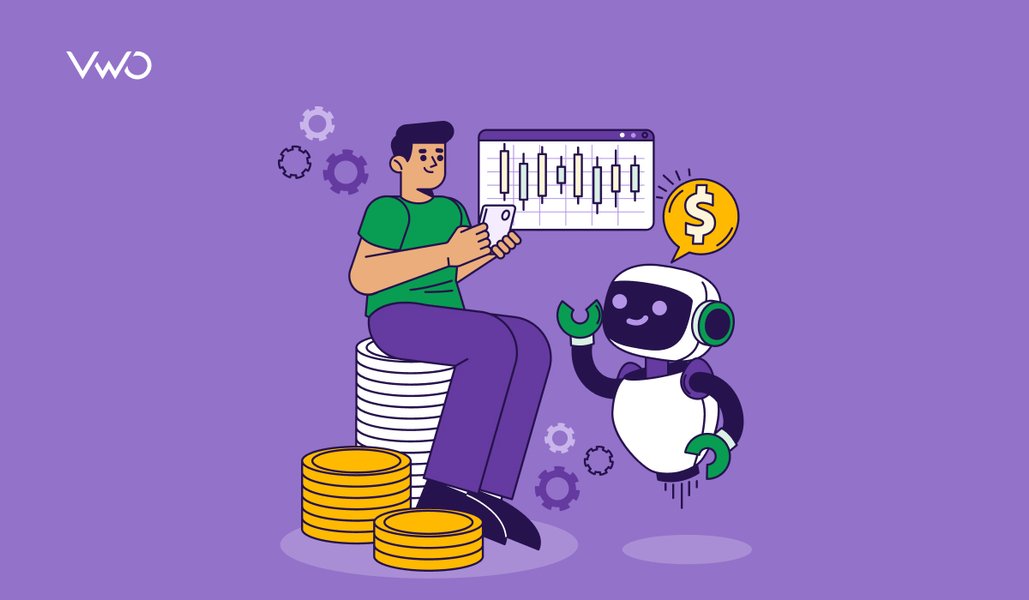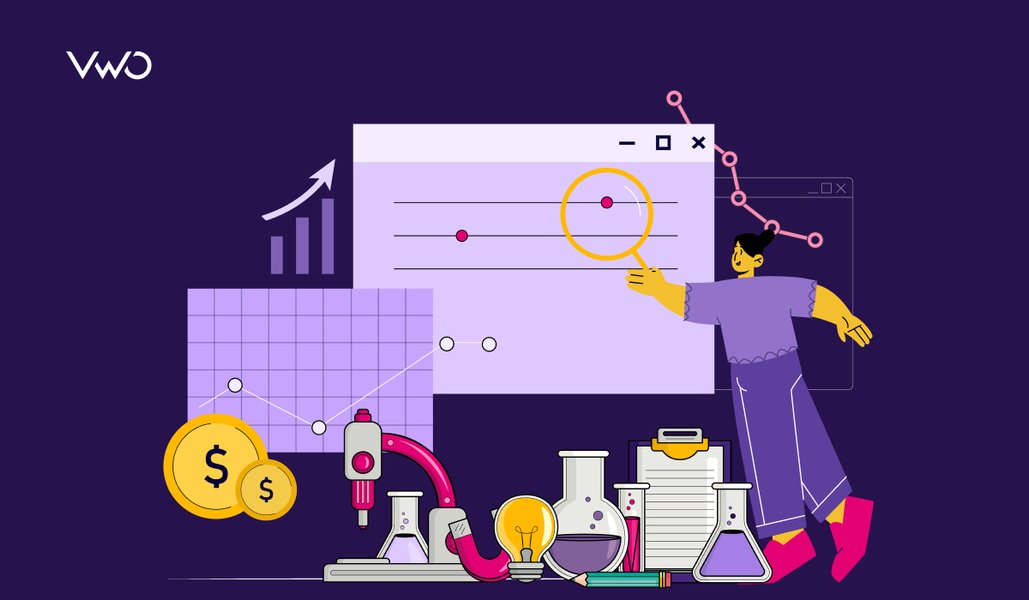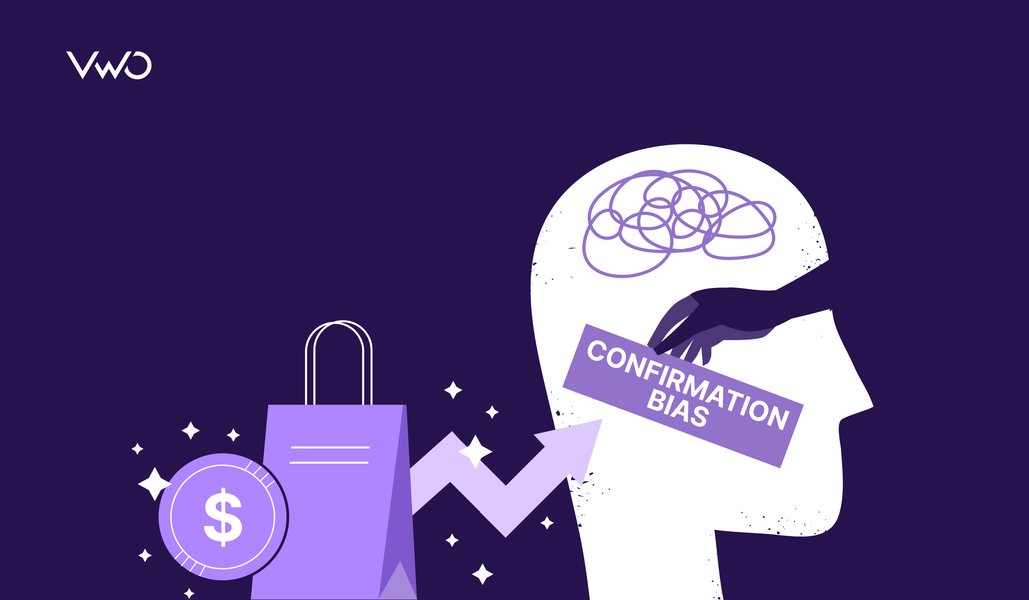Having a clear understanding of your conversion funnels is like having directions (or setting up Google Maps) to where you want to go. A good conversion funnel will make it easier to optimize your marketing efforts because you can speak the same language within your team. Objective data will also remove the “anecdote-driven” analysis that plagues many companies.
Download Free: Conversion Rate Optimization Guide
In this post, I’ll show how to build your own conversion funnel, visualize it and analyze it. Let’s jump right in and start mapping your unique funnel.
What Is A Conversion Funnel
A conversion funnel is simply the series of steps a user must take to convert. The conversion process can have multiple steps e.g. buy something, create an account or some other desired action.
That first challenge that every product and website will face is that they have a unique funnel that represents how they approach their marketing and view customer satisfaction. The other challenge is that users will not always follow your “perfectly” designed funnel and could enter into your funnel in unexpected ways.
That being said, let’s do our best to map out your own funnel. You’ll find many different frameworks online but I personally like the Buyer’s Journey framework from Hubspot which has 3 stages for the funnel: Awareness, Consideration, and Decision.
Awareness is when the potential customer (prospect) is doing research on how to best solve their problem or opportunity, Consideration is when the prospect commits to solving their problem and Decision is when the prospect is weighing specific options and is ready to buy. The stages aren’t final and prospects may go back and forth between the stages of conversion as they learn more information.
Mapping Your Own Unique Conversion Flow
In your conversion funnel, you want to understand how different portions of your website or product fit into these 3 stages. Let’s take an ecommerce store, Indochino as a case study. Indochino offers custom suits and clothes through their online and in-person stores. For this example, we’ll stick to the online portion for simplicity.
In the Awareness stage, users will be spending time on the Indochino website, going through their blog posts. Maybe they have an upcoming party which has a dress code of “Black Tie” and they don’t know exactly what that means.
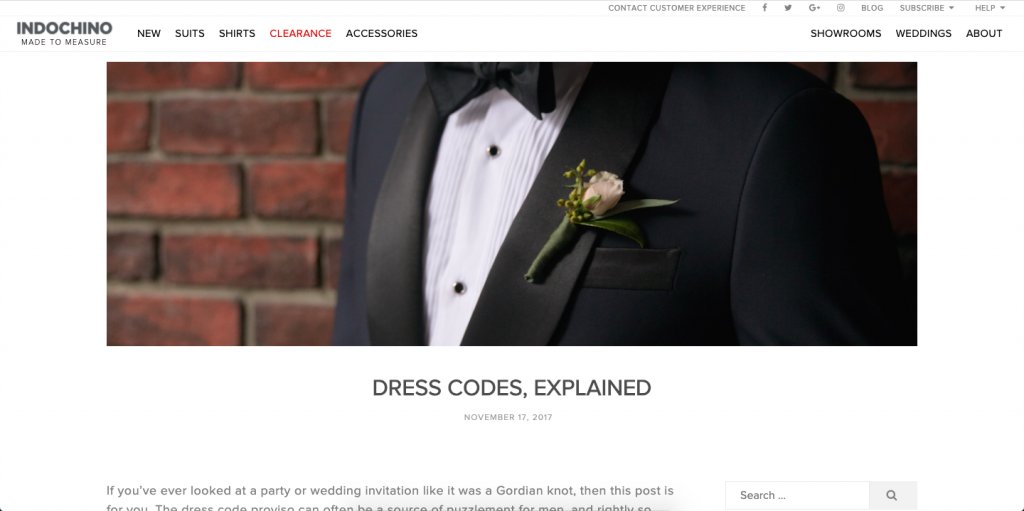
Or maybe they are trying to understand how much they should be spending on a suit. They think they need a new one but they aren’t sure of all the details behind what makes a good suit.
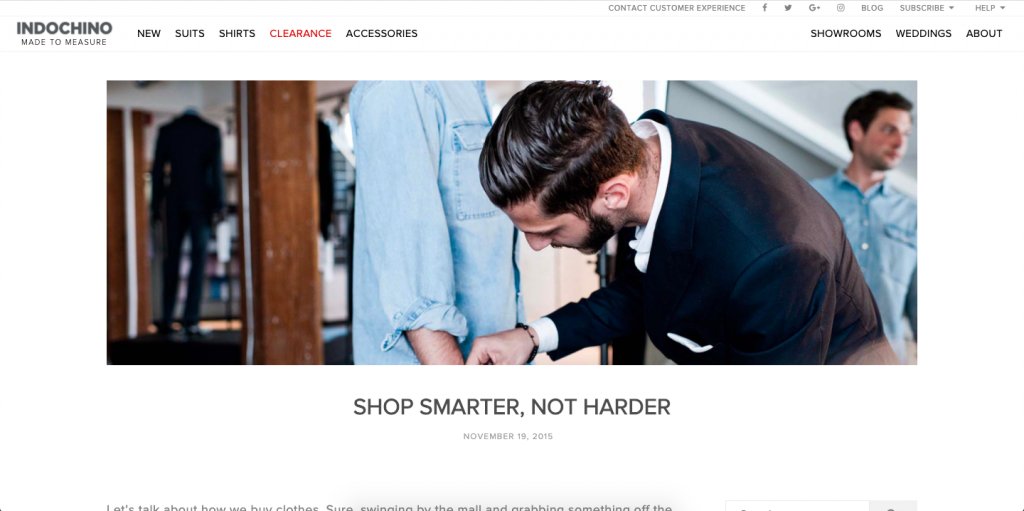
If the user continues their research, they will eventually move to the Consideration stage. They concluded that they do need a new suit for their “Black Tie” event and Indochino might be a good option for that. In this stage, they could be trying to understand the different kinds of suits available. Indochino’s option to “Feel the Fabric”, where you get fabric samples, could be interesting to people in this stage.
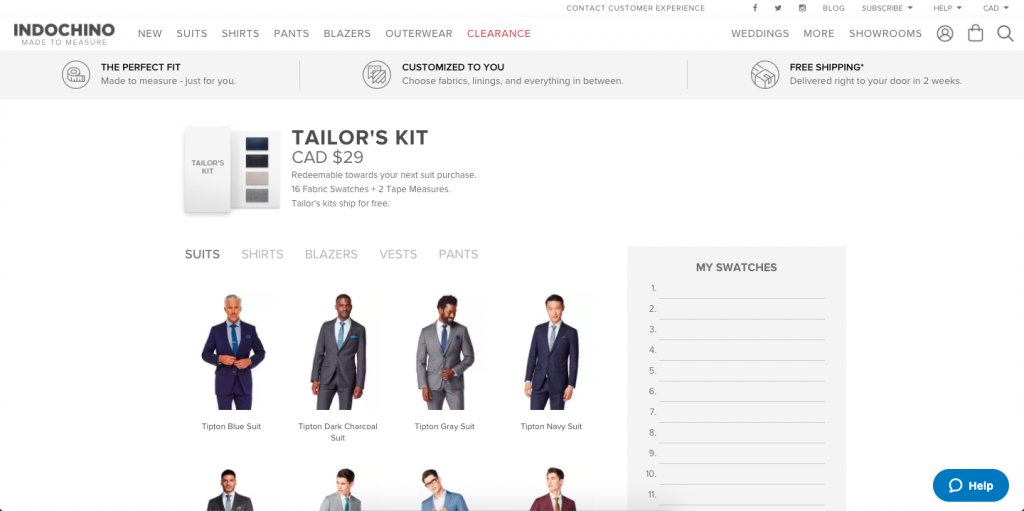
Finally, if the user moves on to the Decision stage, they will be looking at specific suits and how the checkout process works. This is where we will see the classic ecommerce steps of adding products to cart, checking out and completing the purchase.
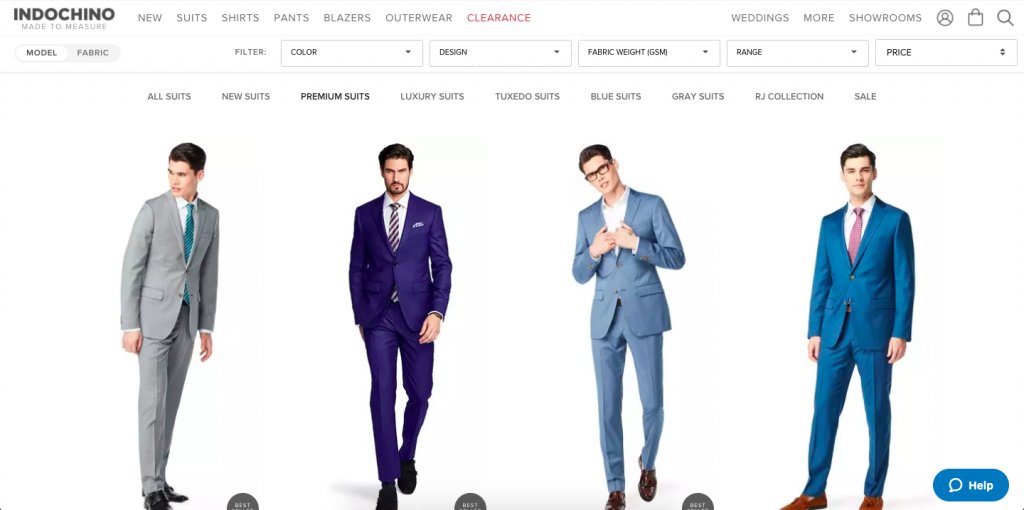
For a company like Indochino, their conversion funnel could look like this:
- Encourage user to visit educational content
- Guide them to get fabric samples
- Help them narrow down the right suit category and options
- Go through the checkout process
This funnel has 4 major steps but there could also be minor steps in between such as signing up for a newsletter, adding an item to cart, entering credit card details and more. The goal here is to design a conversion funnel that gently guides users to your end goal (purchases, signups, etc) and is consistent across devices.
Once you design your funnel, it is time to visualize it and analyze it.
Download Free: Conversion Rate Optimization Guide
Visualizing & Analyzing Your Conversion Funnel
The visualization of your funnel in your analytics data will help you see where users are dropping off and then let you choose a strategy to improve it (our next section).
The end goal of of this section is to get a report like this one:
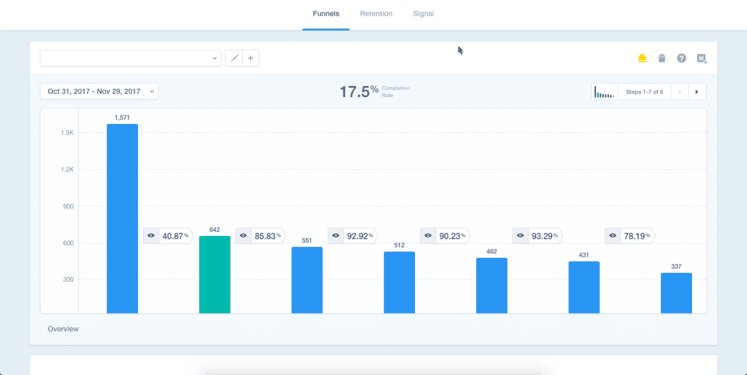
We can see all the steps in our conversion funnel, the drop offs between them and we could segment this funnel by different dimensions e.g. country, city, browser, device, marketing campaign, etc.
You’ll need to work with your engineering team to track the right data but it will likely include some combination of analytics events and user attributes. Below you will find links to more information as to how popular tools could visualize this report for you and I’ll show you how to do it exactly inside Google Analytics and Amplitude.
Amplitude Funnel Analysis
Google Analytics Funnels
Mixpanel Funnel Analysis
Heap Analytics Funnel
How to Analyze Your Conversion Funnel in Amplitude
Amplitude lets you easily build funnels on the fly, tweak them and then get real time changes to your data. You’ll start by selecting your events for your funnel which you can filter any event or user properties.
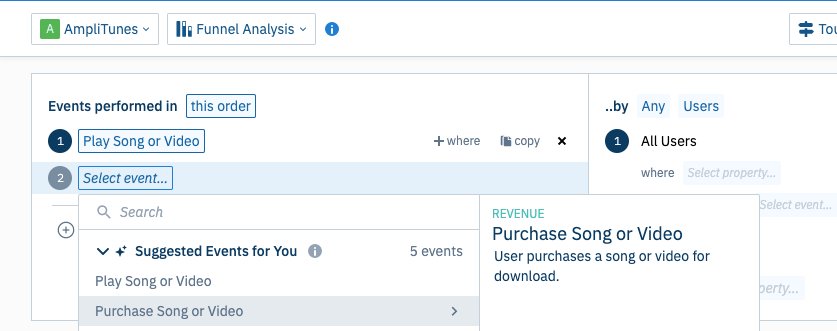
This will display the basic funnel and show you the overall conversion rate and the dropoff in between steps.
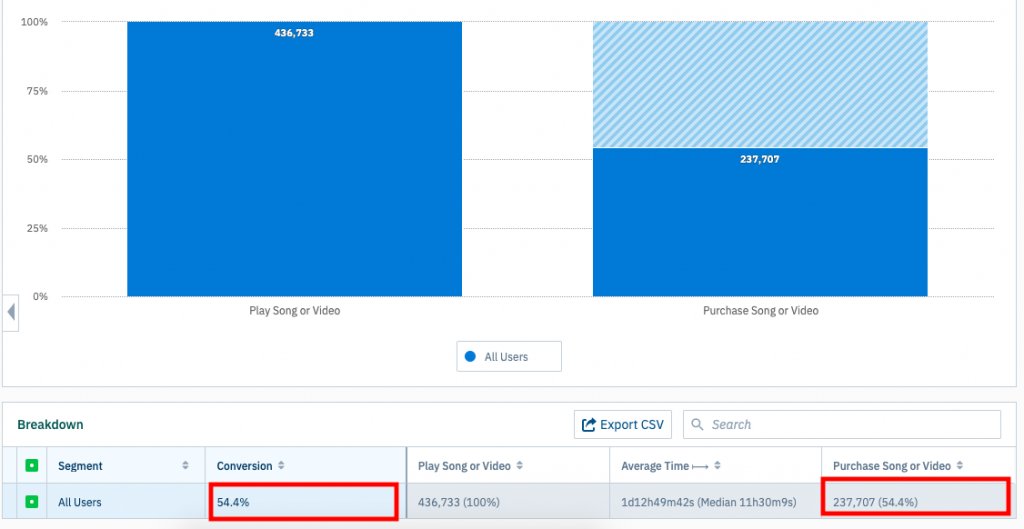
Now we can slice this funnel through any of the available event properties or by using the customer segments available in your account.
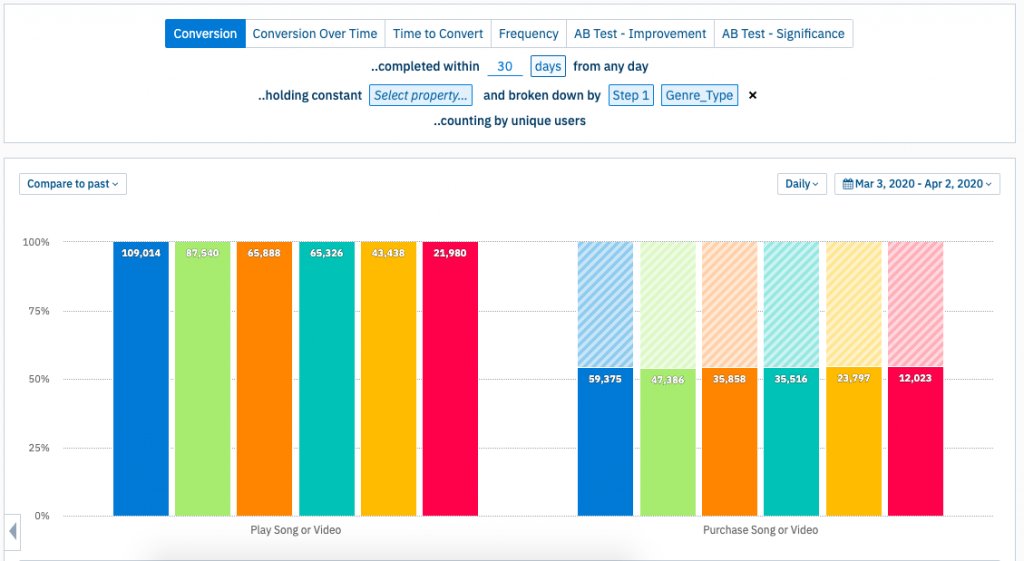
You’ll soon learn how these options translate into the 3 strategies listed in the next section.
How to Analyze Your Conversion Funnel in Google Analytics
Google Analytics can do many things but funnels is one of the major weaknesses especially on the free version. That being said, you do have two types of funnels available in GA.
The first is the funnel attached to goals which you define manually when you create the goal completion. It does the basic job but the data can be wonky especially if users can enter your funnel at any stage.
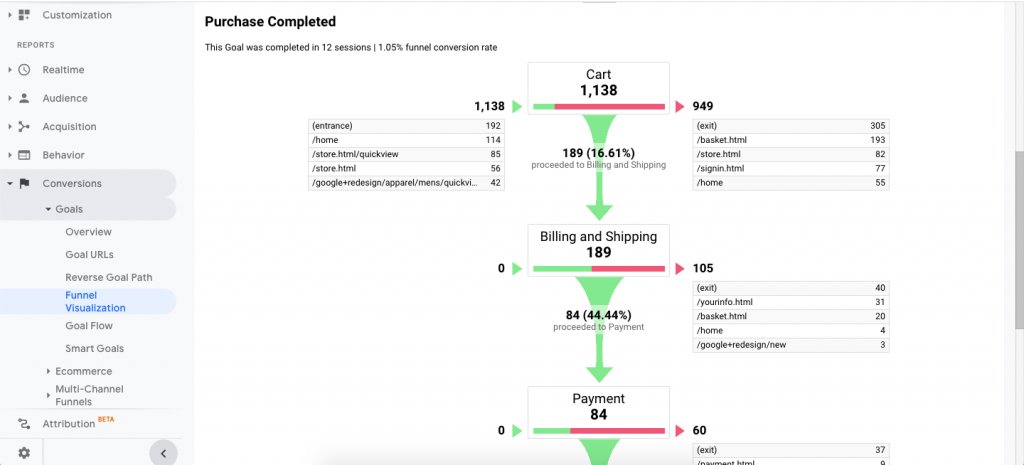
The second option and my preferred one is to use the ecommerce checkout behavior. As the name implies, it is designed for ecommerce stores but you could hack it for any kind of sales funnel.
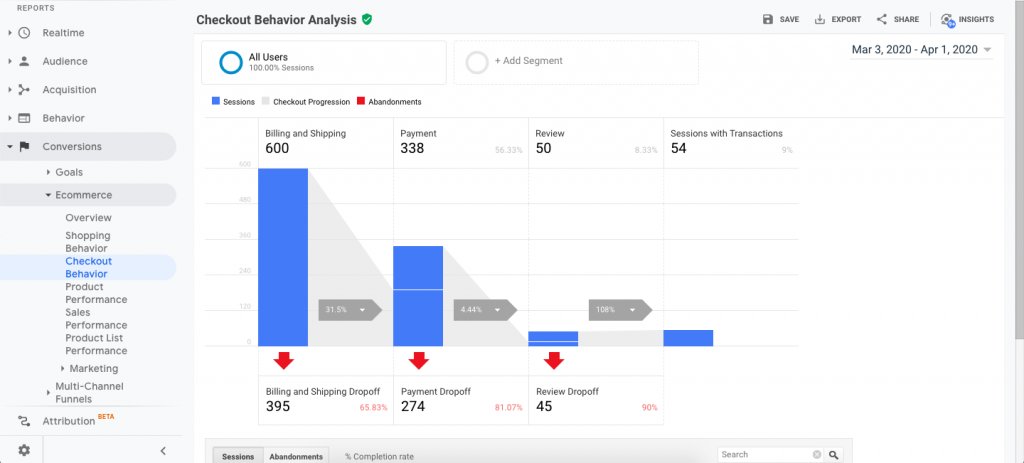
You’ll have the option to slice this funnel using your advanced segments which is quite handy. Both of these funnels have to be defined ahead of time and aren’t easy to change once you define them. This pales in comparison to the flexibility you will have building funnels with tools like Amplitude.
Once you have accurate data for your funnel, we can look at the 3 possible strategies to optimize your conversion funnel.
3 Strategies for Conversion Funnel Optimization
You designed your conversion funnel and you visualized it using your favorite analytics tool. You’re now ready to optimize your conversion funnel and increase the conversion rate. It may seem that there’s an infinite possibility of the things you could do here but they all can be organized into 3 major strategies.
1. Find Outlier Segments
The first strategy is to find customer segments that convert at a higher rate than the average. You may discover that users who come from your email marketing efforts convert better than those who come from social media ads. Having the right data will be critical here as it will let you breakdown your funnel into potential segments.
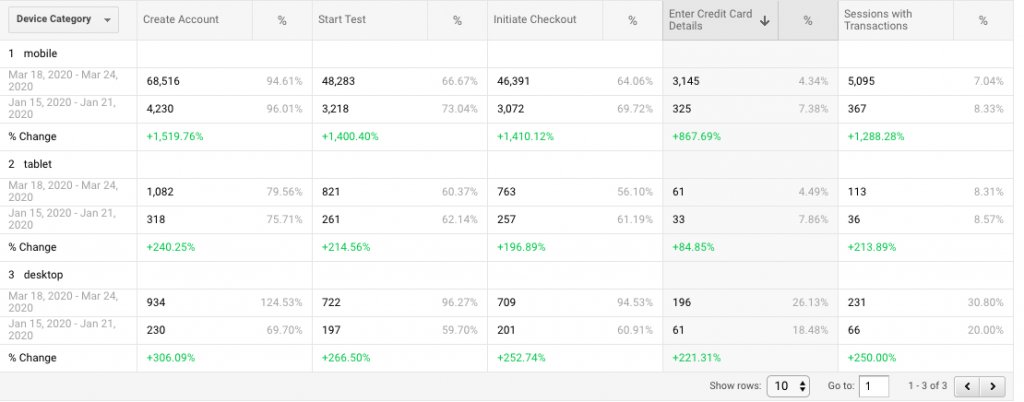
Once you discover a segment, you need to make sure that there’s a strong correlation (and even causation) between your results and the conversion rate. Running further A/B tests and collecting data will help you confirm this. This is also where communication like cart abandonment emails can come in.
This is a great strategy to begin with because it helps you tap into what is already working and simply double down on it.
2. Fix the Biggest Holes
The second strategy is to fix the biggest holes or drop offs. You may learn that 50% of users are dropping off after adding the item to their cart instead of continuing to the checkout. This could be due to technical issues or an overall lack of trust in your website or landing page.
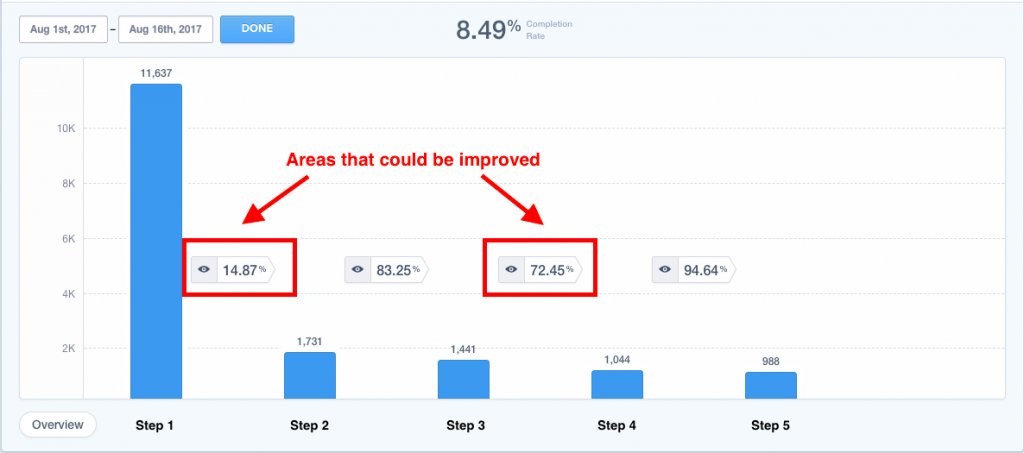
I would focus in particular at high dropoff rates at the bottom of the funnel. A user who is in the checkout process has already committed to purchasing something so seeing high dropoff rates as they are about to enter their credit card would raise alarms.
One common issue that I have seen with some companies is that they hide anything that could turn off the user so they don’t show the pricing or the terms or the caveats in the hope that momentum carries the user forward. If users are surprised towards the end of the funnel then you’re withholding critical information that could be shown much earlier.
This strategy can have a significant impact on your conversion rate especially if you have never audited how the site feels & performs to “regular” users.
3. Remove Steps Altogether
The third and final strategy is to remove steps from your funnel altogether. In general, less steps should increase the overall conversion rate. This isn’t always true but if there any steps that could be condensed or removed, you should do that.
One of my favorite examples here is Amazon adding the “1-Click Checkout” option to some of their products. For some users (like myself), I know I want this product or service and I would prefer to avoid unnecessary steps especially since Amazon already knows my defaults for payment and shipping.
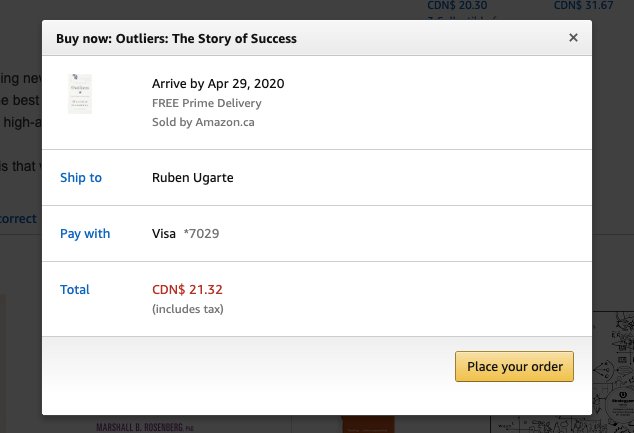
The analysis of your conversion funnel doesn’t have to be complex.
There’s a limited number of strategies but the main issue is ensuring that you’re testing things properly. This means designing the correct A/B tests and reading the data properly.
Check out this exciting episode from the VWO Podcast where corporate strategist David Isaac Mathews explains the importance of customer activation, engagement, and retention in business growth.


